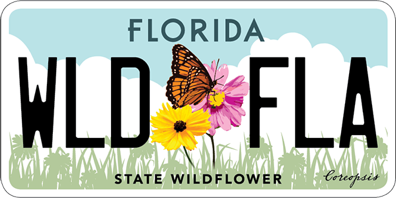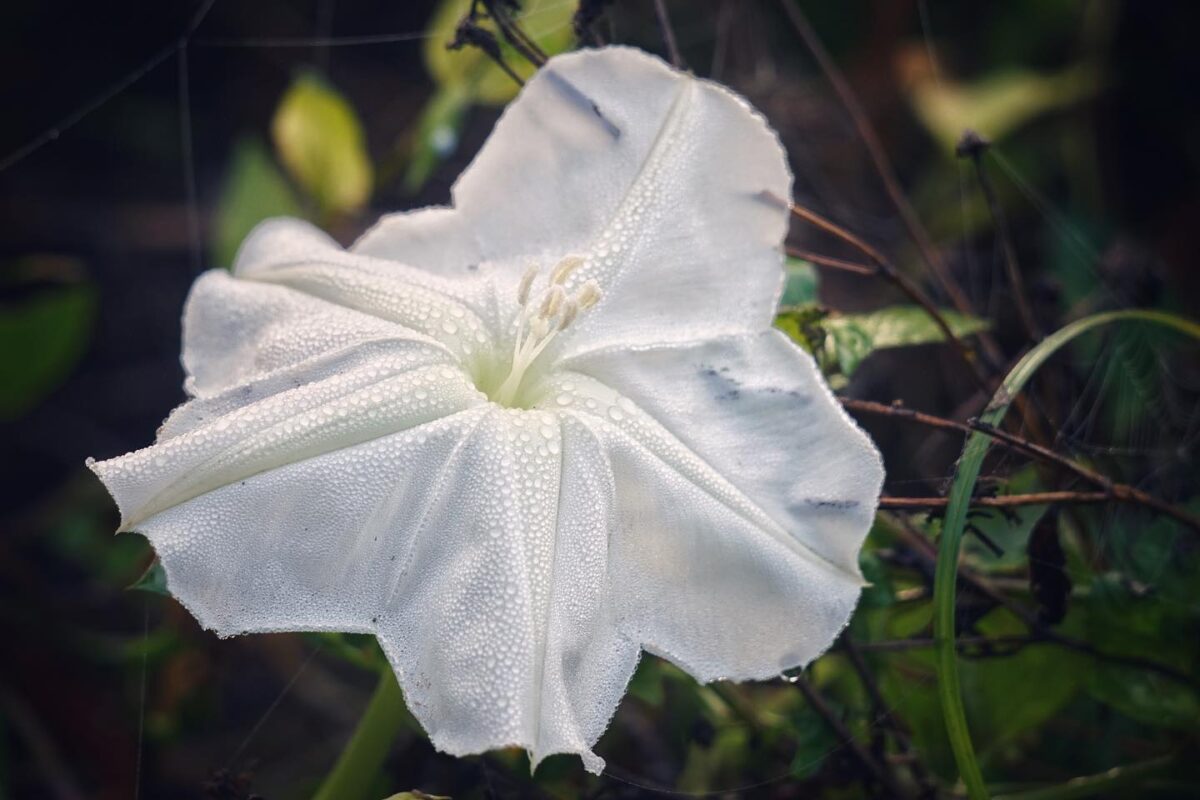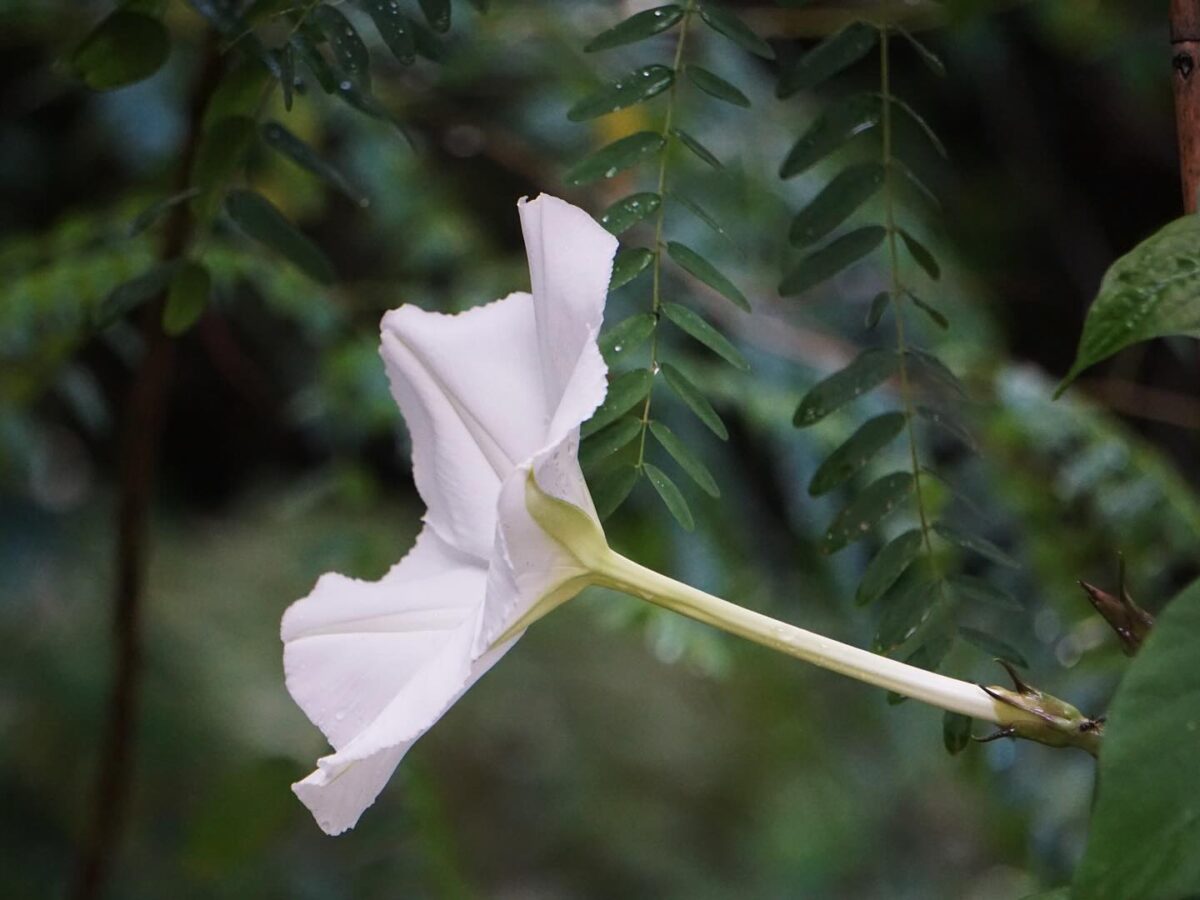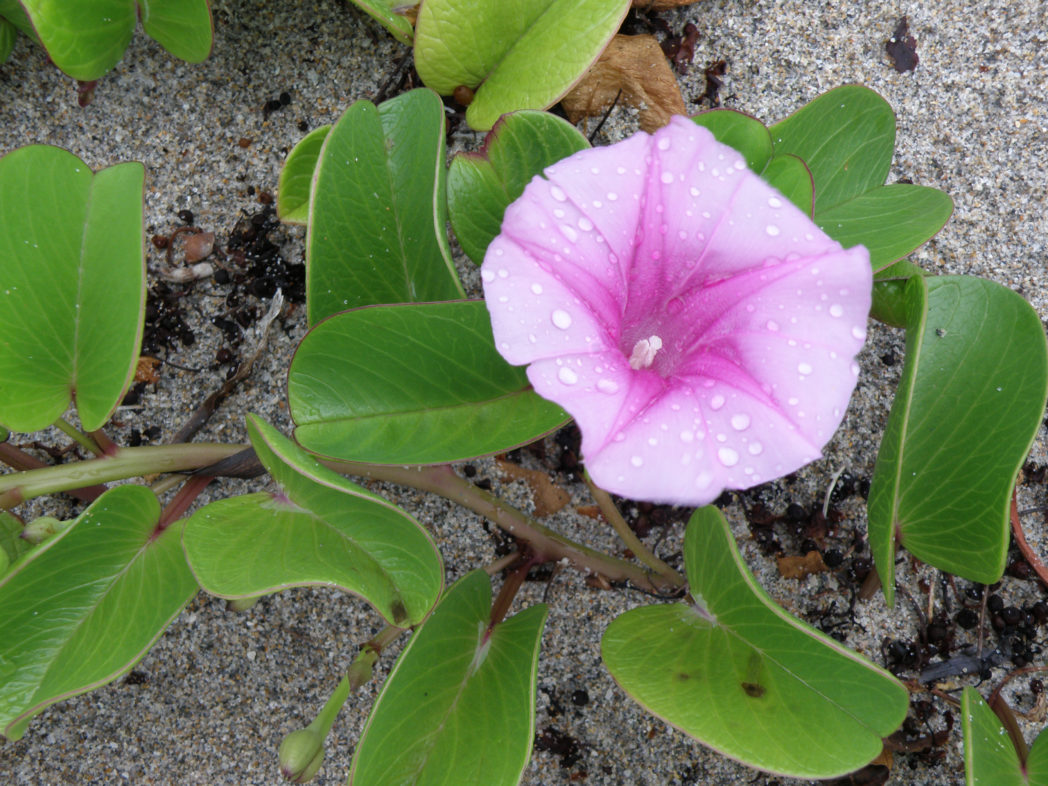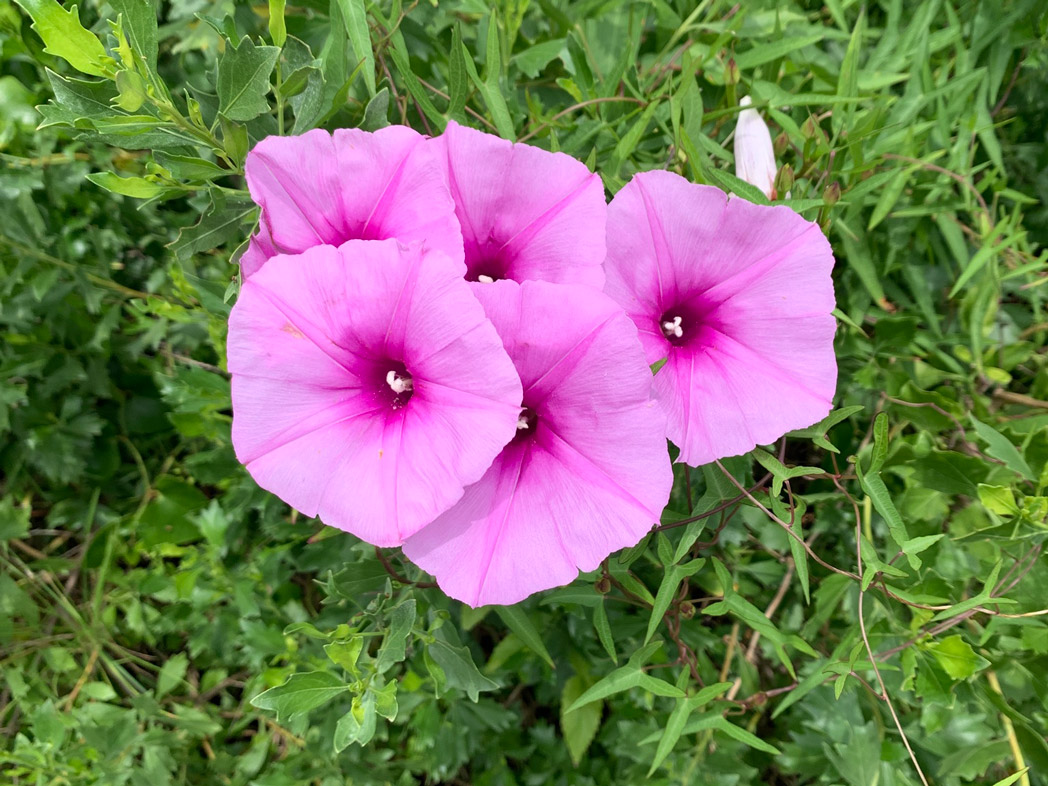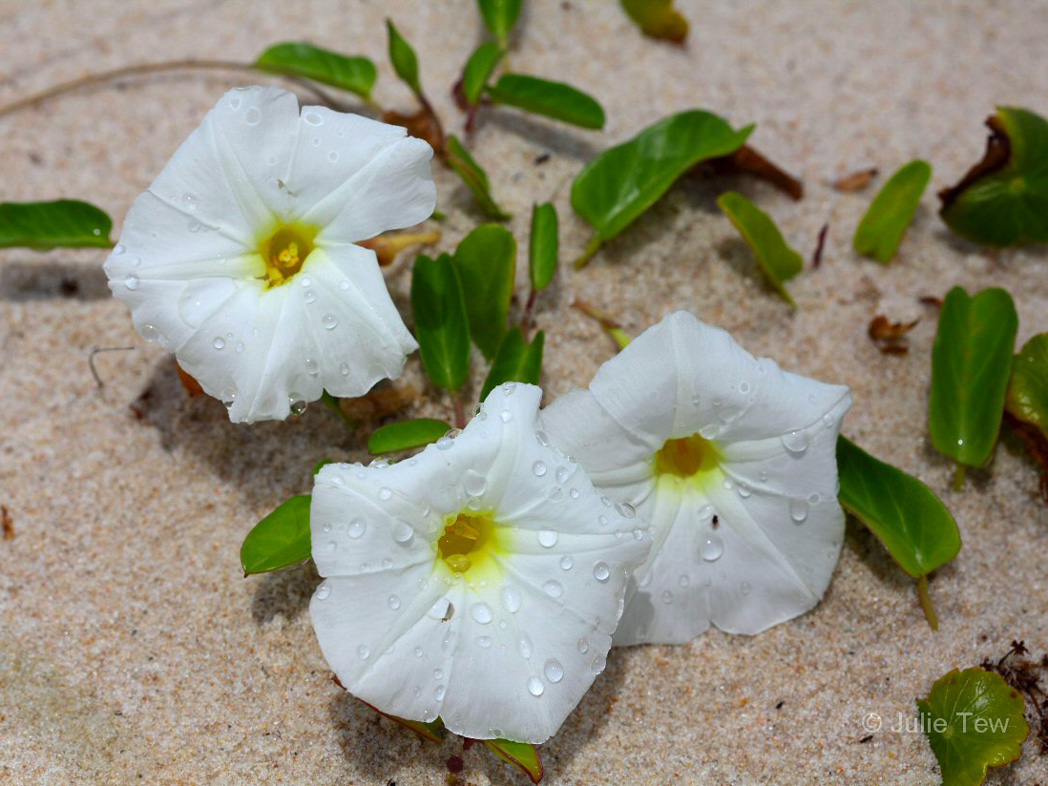Moonflower
Pictured above: Moonflower (Ipomoea alba) by Emily Bell. Click on terms for botanical definitions. View post as a PDF.
Moonflower (Ipomoea alba) is a vigorous herbaceous vine native to tropical and subtropical regions of the Americas and the Caribbean. It occurs naturally along the margins of wet to moist hardwood hammocks, mangrove forests and swamps. From summer through early fall, its large, fragrant white blooms burst open at dusk and remain open throughout the night. They attract and are pollinated by moths, including the large Hummingbird and Sphinx moths.
Stems are glabrous but often prickly and have a milky sap. Leaves are alternately arranged, large (4-8 inches) and heart-shaped to broadly ovate, sometimes with three to five lobes. The bright white flowers are funnel shaped, with long, narrow throats and four or five fused petals, measuring 3 to 6 inches in diameter.
Some sources question the nativity of Moonflower in Florida. It has been widely introduced across tropical and subtropical regions of the world and is listed as invasive in parts of Asia, China, Australia, New Zealand and Pacific islands.
Family: Convolvulaceae (Morning glory family)
Native range: Peninsular Florida from the Keys up to Volusia County, infrequently observed up to Duval County
To see where natural populations of Moonflower have been vouchered, visit www.florida.plantatlas.usf.edu.
Lifespan: Perennial
Soil: Moist to seasonally inundated well-drained sandy or calcareous soils
Exposure: Full sun
Growth habit: Twining vine with stems reaching over 15 feet long
Propagation: Seeds, cuttings
Florida regions of landscape suitability: North (peninsular), Central, South
Garden tips: When in bloom, Moonflower lends an ethereal quality to the evening garden. In can be grown in containers or in the ground, but needs structural support suchs as a trellis, fence or other feature. Care should be taken when selecting a planting location, as it can vigorously overtake nearby vegetation. It can also be useful in a bioswale or rain garden.
Caution: Seeds contain indole alkaloids that are mildly toxic to humans and domestic animals.
Moonflower is available from nurseries that specialize in Florida native plants. Visit www.PlantRealFlorida.org to find a nursery in your area.
Learn more about Moonflower from the Florida Native Plant Society and the Institute for Regional Conservation.
For more information on other Ipomoea species, see these resources:
